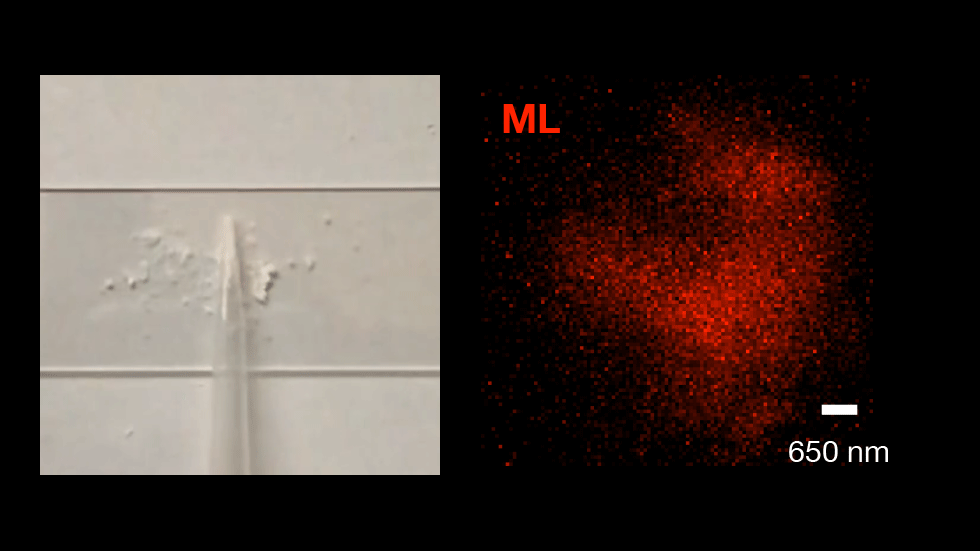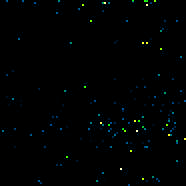Mechanoluminescent Force Nanoprobes




Mechanoluminescence is the emission of light in response to applied mechanical stress. Mechanoluminescent materials emit photons when subjected to compressive, tensile, or bending forces. In other words, a mechanoluminescent material directly converts mechanical energy into photons, providing a quantitative link between the amount of applied stress and the optical output—higher stress produces more photons. I
In the Mukhina Lab, we work with ZnS crystals doped with Mn (ZnS:Mn). We studied single microcrystals of this material and found that they produce mechanoluminescence under both plastic (bottom left) and elastic deformation (bottom center and right). The elastic regime is especially valuable for force-sensing applications, as the mechanoluminescent process does not destroy the crystal and can be repeated hundreds of times.
Even more exciting is the exceptionally low threshold for elasticmechanoluminescence excitation is ZnS:Mn — we found that single ZnS:Mn microcrystal begins emitting hundreds of photons at pressures as low as 0.23 MPs (or 0.23 pN/nm ), which lies within the range of intracellular forces (1–30 pN)! We also discovered that nanoscale stacking faults, a type of structural defect, are vital for elastic mechanoluminescence excitation is ZnS:Mn. Top right panel shows characteristic pattern of mechanoluminescence emitted from stacking faults. [Mukhina et al., ACS Nano 2021]
2
THIS PAGE IS WORK IN PROGRESS!
More detailed information about the ongoing research in the lab is coming soon (or not so soon 🙂).